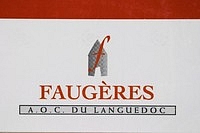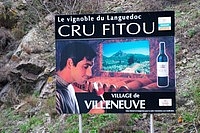
Is the purpose of a classification to benefit the consumer or to benefit the producer? That is one of the questions one can ask when reading about the new (yet to come) classification in the Languedoc. It was recently launched officially at a trade event in the Languedoc. The answer to the question seems to be the producer, but only the incumbent and well behaved.
Here are the principles.
There will be three levels in the classification:
— “plain” AOC Languedoc wines costing 3-4 euro per bottle
— mid-range wines costing 3.5/4 to 7/10 euros per bottles. This will include the appellations Corbières, Minervois, St Chinian, Faugères, Picpoul de Pinet, Malepère, Cabardès and various sub-appellations such as Languedoc St Georges d’Orques and Languedoc-Montpeyroux
— expensive wines, above 7/10 euro per bottle, including Corbières-Boutenac, Minervois La Livinière, La Clape, Limoux blancs, St Chinian Roquebrun and Berlou as well as Languedoc -Grès de Montpellier, Pézenas, Pic Saint Loup and Terrasses du Larzac
If we recall correctly, the mid range is to be called Grand Vin and the top level Grand Cru. Or was it the other way around? Is the distinction obvious to you?
We fail to see the point in this. If the classification is just a function of the prices, what good does it do? Is it difficult for the consumer to look at the price tag? What if someone in Saint Chinian makes a very ambitious wine, costing more than 10 euro, what will happen? Or if someone in Terrasses du Larzac chooses to make a rather simple volume (or makes a promotion to get into a market) wine for only 3 euro?

The CIVL (the producer control organisation) says, according to Vitisphere, that they have no means to sanction those producers who don’t respect the price levels defined. At the same time Jerome Villaret responsible at the CIVL says, according to Vitisphere: “we will only give promotional funds to those who respect the rules”. More from Vitisphere
Languedoc is one of the most exciting and most dynamic wine regions in France and this classification scheme seems designed to stifle that dynamism. To us this seems just another way of trying to do collective price fixing. Is that really acceptable today with EU open market and competitions rules (banning e.g. price fixing among competitors)? And it also seems to be a way of confusing the customer, rather than making it more transparent. And at the same time putting up artificial barriers that will make it more difficult for innovative and entrepreneurial winemakers to succeed. But perhaps we have misunderstood the point?
Update: After we wrote the above we found some more information on the Love That Languedoc by Ryan O’Connell (with an interesting but hard to understand video). But it just seems to confirm what we said. First they create a labyrinth of appellations, sub-appellations, terroirs etc. Then they hope to “simplify” by creating yet another layer of terminology, thinking it will simply for the consumers. Read our more detailed comments on the O’Vineyards blog









